MAY 2021 HUMAN RIGHTS - 400 COPIES
Cuba: Amnesty International and artist Erik Ravelo launch ‘The Eternal Flame’, a digital conceptual memorial in support of San Isidro Movement and freedom of expression
In response to a recent wave of detentions and harassment of members of Cuba’s San Isidro Movement – composed of artists, academics, and alternative thinkers – Amnesty International calls on artists and human rights defenders and activists across the world to join the campaign “The Eternal Flame”, in solidarity with the Movement and independent artists in the country.
“The members of the San Isidro Movement are human rights defenders who stand to protect a very basic freedom, the right to peacefully express their minds and souls. The Cuban government is clearly not ashamed of constantly harassing, detaining and surveilling them before the eyes of the international community, but they are not alone and won’t be silenced. We will continue to mobilize people around the world, including artists, to support them and to denounce these human rights violations and the inhumane and cruel treatment by Cuban authorities”, said Erika Guevara-Rosas, Americas director at Amnesty International.
The members of the San Isidro Movement are human rights defenders who stand to protect a very basic freedom, the right to peacefully express their minds and souls.
In late January 2021, members of the San Isidro Movement and other human rights defenders and journalists, including artist Luis Manuel Otero Alcántara, continued to be detained or harassed by authorities. Cuba’s Minister of Culture, Alpidio Alonso Grau, reportedly assaulted people who gathered in front of the Ministry’s offices to read poetry and peacefully protest attacks on artists in recent months, in another example of the Cuban government’s long-standing assault on freedom of expression.
The January demonstrations followed a protest rarely seen in Cuba on 27 November 2020, during which hundreds of artists gathered outside the Ministry of Culture to demand dialogue with Cuban authorities on the issue of artistic freedom.
In weeks following the November protest, Amnesty International gathered evidence confirming that members of the Movement and their allies were under frightening levels of surveillance and faced arrest by police and state security officials if they left their houses, which could have amounted to house arrest under international human rights law.
During March and April of 2021, over 30 activists were reportedly under similar surveillance levels. Additionally, authorities reportedly took and destroyed some of Luis Manuel Otero’s artwork. Luis Manuel Otero has been on hunger strike for over 48 hours, in protest against these abuses and restrictions on freedom of expression.
This project represents the flame of freedom: a flame that never goes out, a contemporary action that never ends and that is kept alive by our solidarity with artists defending freedom of expression
Erik Ravelo, author of this conceptual video, is a renowned Cuban artist known as the creative mind behind Benetton’s “Unhate” campaign, which featured controversial images of world leaders kissing and earned him the Grand Prix at Cannes in 2012. For The Eternal Flame, he was inspired and supported by fellow Cuban artists and their bravery to resist against illegitimate restrictions imposed by the Cuban government on their freedom of expression.
“This project represents the flame of freedom: a flame that never goes out, a contemporary action that never ends and that is kept alive by our solidarity with artists defending freedom of expression. Freedom of expression is a fundamental human right and as artists, nobody should tell us what is okay to do or say through our art. This is why I, and other artists in the video, burn our tools, to draw parallels with what the Cuban government is doing against Cuban artists. It’s time to stop this repression and respect creative freedom,” said Erik Ravelo.
By launching “The Eternal Flame”, Amnesty International and Erik Ravelo invite artists and activists to express their solidarity with the San Isidro Movement and other human rights defenders and artists, urging Cuba’s government to stop repressing them and, instead, take overdue steps to engage in genuine dialogue to protect freedom of expression. People can show their support on social media, using the hashtags #TheEternalFlame #LaLlamaEterna.
For more information or to arrange an interview, please contact Duncan Tucker: duncan.tucker@amnesty.org
Cuban Dissident Hunger Strike Challenges Government
HAVANA (Reuters) - The leader of a group of artists, writers and activists has announced a new hunger strike, just six months after one led to a rare protest in Havana, putting them on a potential collision course with the island's communist authorities.
A previous group hunger strike by the San Isidro movement in November was broken up by police, resulting in a rare demonstration of around 300 people in front of the Culture Ministry in Havana.
Since then, the group has been vilified by authorities as outside agitators working with the United States. The few dozen members have been temporarily detained repeatedly and often told they cannot leave their homes with communications cut.
Leader Luis Manuel Otero Alcantara was arrested and some of his art destroyed and seized a few weeks ago as the performance artist protested a Communist party congress by sitting in a garrote.
Otero Alcantara, who is into the seventh day without food or fluids, is demanding his art be returned, freedom of expression and an end to police harassment.
"We are calling a national vigil of all Cubans in the world for the life of MOAlcantara (Otero Alcantara)" the movement said on Twitter Friday evening, after an earlier call for Cubans to gather in local parks holding flowers fizzled.
The government has responded by questioning the authenticity of the hunger strike, surrounding Otero Alcantara's home with police and cutting internet to the neighborhood.
People can survive more than a month without food, but rarely more than 10 days without food or fluids.
Father Ramón Suarez Polcari of the Havana archdiocese, visited Otero Alcantara on Friday and said he had no intention of backing down.
The government also appears in no rush to budge.
Unlike other dissident groups in Cuba, the San Isidro collective is social media savvy and well connected to the Diaspora and exile organizations.
They have been appealing for support since the hunger strike began, gaining little traction to date in Cuba but some abroad, including from human rights organizations and the U.S. government.
"Dozens of Cuban artists, journalists and activists arrested, under surveillance, or confined in their homes to silence their support for MOAlcantara," the U.S. State Department said in a tweet on Friday.
"The United States stands with all who defend freedoms of expression and assembly in Cuba."
(Reporting by Marc Frank; additional reporting by Nelson Acosta; editing by Diane Craft)
Copyright 2021 Thomson Reuters.
Hate manipulation: another move of dictatorship
Those who believe that castrism cannot go any further, sin for lack of imagination; a mistake that in politics is usually paid dearly
JAVIER PRADA
Luis Manuel Otero is at the Calixto García Hospital, says Provincial Directorate of Health Havana
In an informative note posted on his Facebook account, the institution noted that the artist was received at the hospital center "with a diagnosis of voluntary starvation referred to"
CUBANET
Luis Manuel is homeland and life. I shouldn't be another dead hero.
Without pretending to be, Luis Manuel Otero Alcántara is a Prometheus of the street, of the neighborhood, of that rebellious area that power refuses to recognize.
HAVANA, Cuba. – Luis Manuel Otero Alcántara has been forced to stay alive, but he has not ended his protest: his demands still stand, he could die at any other time. That possibility terrifies me because I have the joy of being his friend and I have never associated Luis—such a vital young man—with death, or with hopelessness or sadness, but with perseverance.
Luis Manuel is joy, it is friendship at all trial, it is coherence within his apparent madness and his constant evolutions, it is vital energy and it is also beauty, because it is homeland and life. Someone like that shouldn't be made for premature death, let alone to make us cry over his absence. More words, Cuba should stop being once and for all because of deaths, exiles and tears.
I don't like to revere gods, people or symbols. I did it sometime and I was disappointed. I'm sick of dead heroes, their legends, and now that I'm exceeding half a century of life, when I want to calibrate my existence, I only find my paradigms in a few living around me. But to the dead (like social media) I have let them rest in peace.
Luis Manuel, much younger than me, is one of those paradigms. Sometimes, when I've been about to lose my compass—or I've lost it—on this tortuous path to freedom—which will come yes or yes—I've thought of Luis Manuel's example to recharge again with the strength I need not to give up, to go back in my footsteps and correct my path because, unlike him , I don't have real hero wood. I am content to imitate them in the essentials, to provide myself with their energies.
But Luis Manuel, without pretending to be, is, and he is a Prometheus of the street, of the neighborhood, of that rebellious area that power refuses to recognize because he is aware that there, where poverty is most widened, he develops what is to come, although he also knows that the cutting sword of heads is not in the hands of any of us , but is forged just a few steps from the throne. Live to see.
Luis Manuel is dangerous because, on hunger strike or performative, he paints his nails or gets hot in a chat, with his intelligence and charisma could turn the next act (the one that is yet to be performed) into the final trigger.
It may not be that leader of crowds that some expect, but in a conjunction of causalities and chances—by accession or rejection—it can lead to its emergence even within the regime itself. Because if some want to stay in power for another 60 years, they will necessarily have to open the doors to reformism. And again I repeat it: let's live to see it. To die alone when the time comes and is inevitable.
Cubans don't want to know about more violence or loss. Nor of sending bellies and little children of Dad, opportunists and sanctimonies. People are desperate and want immediate change and prosperity, no matter where they come from. But these aren't going to come without popular pressure. And for this to be effective it has to be sustained and lead at least one leader of the people. Luis is what we haven't seen in ourselves in a long time. And while he despite some, he does what we didn't have the courage to do when we wanted and we could.
He's the guy who overcomes fear and opens the doors of his house to reconcile a fragmented and confronted opposition. It is not the guy who has taken refuge in Miami at the first pinch, nor the one who wears a suit or guayabera and isnga from a grandstand, nor the one who founds a partiducho without followers and later, too late, rushes to draft a political project. He's just the guy who's been able to step on the calluses of power, tickle him, sing his forties, and that surpasses any slogan and campaign.
Luis Manuel, with his actions, has worked the magic of making us think about who we really are, of bringing to identify our fears (those that immobilize us) in that precise moment when we begin to know him and break our schemes, we drop masks, poses, ridiculousnesses and evolve as human beings.
When I think about it well, and I remote myself to those times when I met him and began to discover his work, I realize that, to a large extent, it was because his attitude to life inspires, that I have been able to do my work these years with the certainty that I am doing something much more useful for the common good of Cubans than that other of fattening the ego and filling the walls of my house with literary awards.
With Luis Manuel, and with Yanelis Nunez, and with other young artists I've met and even seen born and bloomed over the last ten years, I'm much "less young" than all of them, I definitely understood that if we want a country with everyone and for the good of everyone, everyone will have to do what they can do best , and thus contribute to our moral mission as worthy Cubans.
Meeting Luis, a while ago, and enrolling in several of his art projects as well as receiving his spontaneous support in my work as a journalist (making it easier for me to access some source and even holding the camera in an interview), changed my vision of life. I have enjoyed interviewing him, chatting with him, even drinking beer, playing pool and sunrise sometime in a Chea nightclub in Guanabo, surrounded by cops crazy for apprehending us under any pretext and yet, in fear or without them, laughing about being aware that, in the end, freedom is in ourselves.
I admired his bravery when, along with Yanelis, he made the Museum of Dissent as inclusive as it was controversial. I admire his defiant attitude, his ability to generate a whirlwind of ideas, all seductive, and therefore win our complicity, to the point of making us enjoy the danger of being a "mouth", a disobedient when the damn "common sense" of cowardice invites us to silence.
I loved his absence of prejudice, his sincerity without brakes, very annoying for many who today hate and fear him. I love and continue to agree with him on some subjects and differ in others, also our closeness and remoteness because the two involve a total commitment of both to art, literature, journalism and, of course, to freedom. But I may have given up on his peculiar humour, as before that grace, without a shadow of drama, with which he told me one day that he always had a toothbrush in his pocket, ready for arrest, to spend the night in a dungeon.
Because Luis Manuel has always been prepared for the worst. And as a good team player, he is willing to sacrifice himself for the common cause, to move on to the next level of this macabre tournament that is coming to an end.
But I hope it's not at the cost of his life. That's not it. Luis Manuel shouldn't be another young martyr, another dead hero. We've had enough. I could never accept that our future freedom is so high-priced. In the midst of the darkness around us, it would be criminal on our part to let the nation be taken away from so much light.
New video by Luis Manuel Otero Alcántara at Calixto García Hospital comes to light
The leader of the San Isidro Movement (MSI) appears next to the head of the medical team that serves him.
MIAMI, USA. – On the afternoon of this Tuesday, Dr. Ifrán Martínez Gálvez, deputy surgical director of the Hospital "Calixto García", presented himself as head of the medical team that serves the Cuban artivist Luis Manuel Otero Alcántara, in a video accompanied by the leader of the San Isidro Movement (MSI).
The Galen, who posted the recording on his own Facebook wall, said he had "a relationship of respect" with the patient and assured that his medical team was "fighting every day" for the recovery of Otero Alcántara.
Speaking, the MSI leader confirmed that the medical staff who serve him has been "spectacular" beyond his claims as an artist. "Doctors have been extremely professional and super attentive," he said.
The nearly two-minute video ends with Martínez Gálvez's commitment to ensuring the patient's recovery. They both shake hands.
Luis Manuel Otero vs. castrist propaganda
The latest developments involving the artist highlight the discredit in which the propaganda organs of the Cuban regime have fallen
To this was added then a material published in DNA Cuba. According to this information, the young plastic artist, after being removed from his house at five in the morning, "was taken to the Hospital Hermanos Ameijeiras and, once stabilized, transferred to the Rubén Batista room of Calixto García". The independent press body invokes "medical sources" that, in order to evade persecution, it is natural for them to claim anonymity.
This, of course, would explain the comparatively good aspect that Otero Alcántara seemed to present upon arrival at the last care center mentioned above. It is logical that if, among other things, he was put with a serum in the Ameijeiras Brothers, when he arrived at the second hospital he would be hydrated and relatively well for the protest he starred in for a week.
To this are added other inconsistencies in the "official history" (or, in some cases, informal). Here comes the kind of "faith of life" granted by Luisma's GP. The practitioner is hurt in his morals by the disqualifications that, as a supposed agent of the regime, make him many users of the network. But if he wasn't identified with the current government, would he lead the team that serves Otero! And would you authorize him to stream a video filmed with his patient heterodox!
Another scaburon in this saga is integrated by recent photos of the striker, in which it is observed that it presents, on his right eyebrow, an easily visible wart. This individual feature shines by its absence in the so-called "Luis Manuel Otero" presented by the Star News, while producing its hypothetical arrival at the Calixto García Hospital.
But on the other hand, if the patient is ok (as the regimen suggests), why is he kept in an intensive care room? What is the reason for the lack of information around you? What motivates you not to be allowed more visitors! Why does the central hospital you are in now stay under a real siege of the police forces in the service of the regime!
But I insist that neither the clarifications provided by the "medical sources" nor the inconsistencies of the official version are the most important thing. What is truly noteworthy is that, on social media, the generality of the comments posted called into question, from the outset, the "official history"; they were on a basis: in essence, what the regime's "journalists" do is lie, misinform, twist the truth, and denigrate those who do not hide to oppose Cuba's regime of hunger and misery.
The ideological department of the Central Committee of the only party, yet and its brand new head appointed during the recent Congress (and despite its many "cyberclaries"), has already lost the communication battle. And well deserved is it!
Luis Manuel is neither naive nor holy nor messiah
People are looking for a leader, the same to hang him as to venerate him, but Luis Manuel Otero Alcántara is just an artist.
HAVANA, Cuba. – My search for the mole on the forehead that says luis Manuel is missing in one video or the other lasted five seconds. There are people who have been looking for differences between one recording and the other for two days, or who are lost in cinematic details: that if it is a double, that if it failed, that if it had to be more energetic and scream, than if it should not have touched the supposed doctor, that if the repressors are not treated like that, that if he let us down.
The reality is one: we had to put a Luis Manuel on camera, and I don't care if they inflated a doll or dabbled in robotics to give us the faith of life we ask for so much. If there's one thing I've learned with my friend, it's that we always win something. But what have we done with that territory we've won? Nothing, we follow the iron script that imposed the dictatorship on us even if we could deconstruct it as we please.
Luis Manuel is neither naive nor holy nor messiah, but he is too empathetic for us to understand. None of us have managed to understand his executioner as he has succeeded in doing. And I don't think he has any Christian vocations, he is more of spiritualism, mountain stick and santeria, even if he mentions God as we all mention it.
So, whoever feels let down by Luis Manuel and his statement of thanks to the one who makes a doctor in the video, is because he does not know him or wants to forget very soon everything that Luis Manuel has gone out of the way.
But I have a good memory, I have good anecdotes and I can count them.
The night my friend's intimate video was taken out, I was one of the first to call him worried that something like this leads to suicide for any Cuban male. And no, Luis Manuel was outraged, but quiet. The next day we met because I still didn't think it was so right. We were a group of friends. We laughed as usual and in the middle of the conversation I thought to tell him that I had seen his buttocks too black in the video. Next thing up was the mid-knee short and everyone's laughter.
By then, instead of hiding as any other "Cuban male" would have done, he had already broadcast live talking about the vulnerability we all suffered under this totalitarian regime. He didn't wait for the tide to come down. His response was immediate, just as the networks of semi-naked friends who supported him were filled.
Years earlier, she had given life to Miss Bienal, a cabaret dancer whose mere presence called into question the other pieces of art at the event. Those who know little about art were shocked and still, at every turn, bring out that performance, as well as that of the stripper in one of the most central avenues of Vedado.

Luis Manuel has gone out of protest to bars that have reserved the right of admission for gay couples. He kisses in the nets with other men, forms the scandal and the next day heats San Isidro. Males who have not yet educated his masculinity, like him, tell him he is the bravest there is.
People are looking for a leader, the same for hanging up as to venerate him, but my friend is just an artist. Cubans need a leader to hate or follow him blindly, in the only way we know how to do, and when that fails, we run to discredit, without nuance, without trying to imagine a healthier picture other than that of defeat and disappointment announced.
In the video I see a weak Luis Manuel who took the only chance they gave him to say "Family, we are connected. Homeland and Life", because he is a guy who always has a tremendous desire to live. He's not suicidal. The message was always "I choose how to die," in response to the alleged criminal who, in a dungeon, a day before he started his hunger strike, told him that he would kill him with all the impunity granted to him by the regime.
I'm not that worried about the video. He put everyone in the right place to be. But there are those who continue to put their narratives together on my friend's body, lock him up here or there based on the cruelty of this dictatorship that I will never trust.
Luis Manuel's body wherever they have it is being tortured and, it hurts or not, it is the trench that many have chosen the same to hide their fears as to grow as Cubans.
Unknowns about a Cuban hunger striker
If anything characterizes the information provided by the authorities of the island about Luis Manuel Otero is its darkness
Cuba Frees Otero Alcántara
A founder of an artists’ movement is released thanks to unprecedented international and local pressure.
It is still not known if Luis Manuel Otero Alcántara was subjected to psychiatric torture by the Cuban military dictatorship. The 33-year-old artist was held incommunicado at Havana’s Calixto Garcia Hospital from May 2 until Monday afternoon when he was finally released.
A short, edited video of Mr. Otero Alcántara, posted by regime surrogates via social media on May 20, alarmed friends, supporters and the human-rights community. Amnesty International declared him a prisoner of conscience. On Wednesday the New York Review of Books ran an open letter from more than 30 artists and writers across the globe demanding his release.
The struggle is far from over. This poor Afro-Cuban, armed only with his courage, intellect and creativity, is an existential threat to Cuba’s ruling elite.
Mr. Otero Alcántara is a founder of the San Isidro Movement, a collection of Cuban artists, writers, musicians, students and researchers formed in 2018 to oppose regime censorship. He was on a hunger strike to protest state confiscation of his artwork when police carted him off. They wanted to put an end to the public spectacle of his deteriorating physical condition.
The dictatorship also may have thought that by “hospitalizing” Mr. Otero Alcántara it would gag the movement—and maybe even get rid of him. (He was in the same hospital where Ladies in White leader Laura Pollán died in 2011 at the height of her effectiveness as a regime critic.) But under pressure of rising criticism on the island and internationally he has been freed.
Mr. Otero Alcántara is known for his high energy, but in the regime’s video he was sitting on the edge of a bed, clad in a robe, shoulders slumping, subdued. Like any hostage tape it was proof of life but no more. He was not permitted visitors of his own choosing or access to an independent doctor, lawyer or foreign diplomats. He committed no crime but was not allowed to use his phone or make contact with anyone outside the hospital.
Because the regime has a history of using psychiatric tools like drugs and electroshock against nonconformists, the video also raised concerns about his safety.
For decades Cuba has easily manipulated aspiring artists who need the state as their patron. That cooperation is dissolving and Havana is feeling it. In February a music video titled “Patria y Vida”—“Homeland and Life”—went viral. In the video black Cuban artists Yotuel Romero, Descemer Bueno, the duo Gente de Zona, Maykel Osorbo (now jailed, whereabouts unknown) and El Funky (under house arrest), along with Mr. Otero Alcántara, decry the tyranny they live under. “Who told you that Cuba is yours,” the lyrics ask. “Your time is up, the silence is broken.”
Last week a group of Cuban artists called on the Museum of Fine Arts in Havana to remove their work until Mr. Otero Alcántara was released. The captors denied the artist was being detained. Not only was that a lie, but since April 30 at least six others have been jailed for supporting him.
Intellectuals have long celebrated the revolutionary chic of Fidel Castro because he was anti-American. Never mind that Cuba violently suppresses thought and creativity. Mr. Otero Alcántara, Mr. Osorbo and the broader San Isidro Movement are the victims of this double standard and are calling it out. They are supported by the likes of former University of Havana professors Pablo Betancourt and Enrique Patterson, Afro-Cubans who also dared think independently.
The despots’ playbook for six decades has been to divide the opposition at home and isolate it from the world. Mr. Otero Alcántara leads a moral reawakening to upend that strategy. On Monday he vowed to continue the battle.
Ms. O’Grady is the Journal’s Americas columnist.
Mary Anastasia O’Grady
Mary Anastasia O'Grady writes "The Americas," a weekly column on politics, economics and business in Latin America and Canada that appears every Monday in the Journal. Ms. O'Grady joined the paper in August 1995 and became a senior editorial page writer in December 1999. She was appointed an editorial board member in November 2005. She is also a member of the board of directors of the Indianapolis-based Liberty Fund.
In 2012 Ms. O’Grady won the Walter Judd Freedom Award from The Fund for American Studies. In 2009 Ms. O'Grady received the Thomas Jefferson Award from The Association of Private Enterprise Education. In 2005 Ms. O'Grady won the Bastiat Prize for Journalism awarded by the International Policy Network for her articles on the World Bank, the underground economy in Brazil and the bad economic advice the U.S. often gives to Latin American countries. In 1997 Ms. O'Grady won the Inter American Press Association's Daily Gleaner Award for editorial commentary.
Ms. O'Grady received a bachelor's degree in English from Assumption College and an M.B.A. in financial management from Pace University.









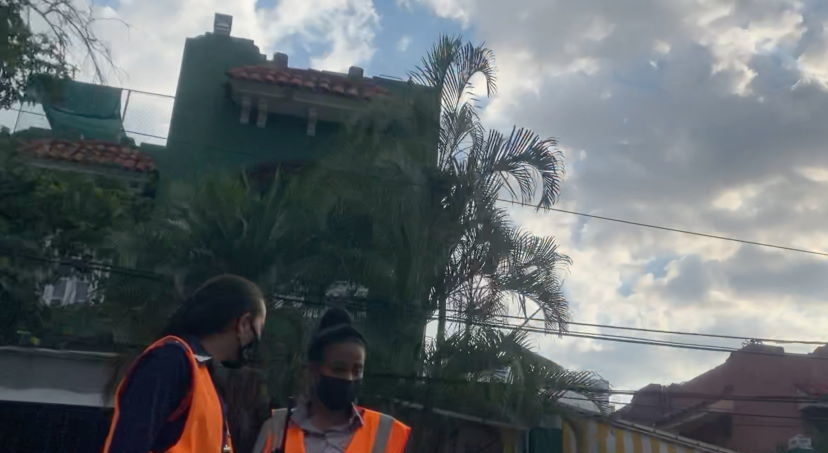
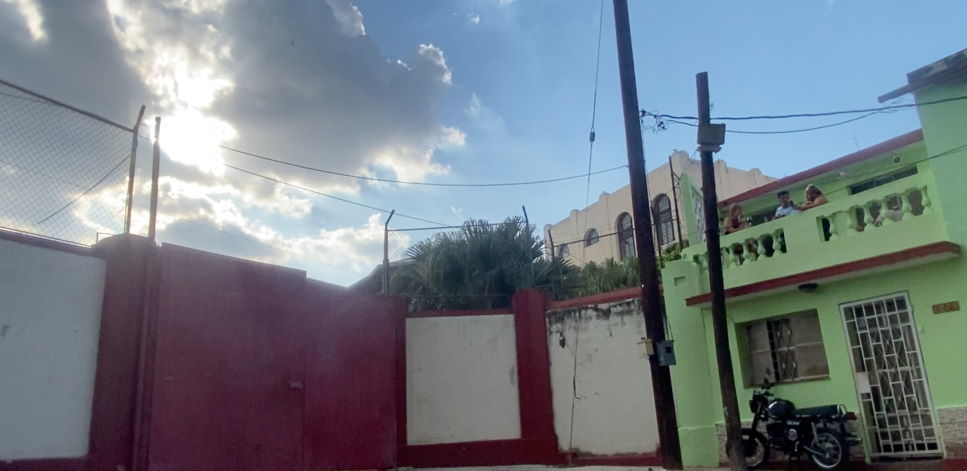

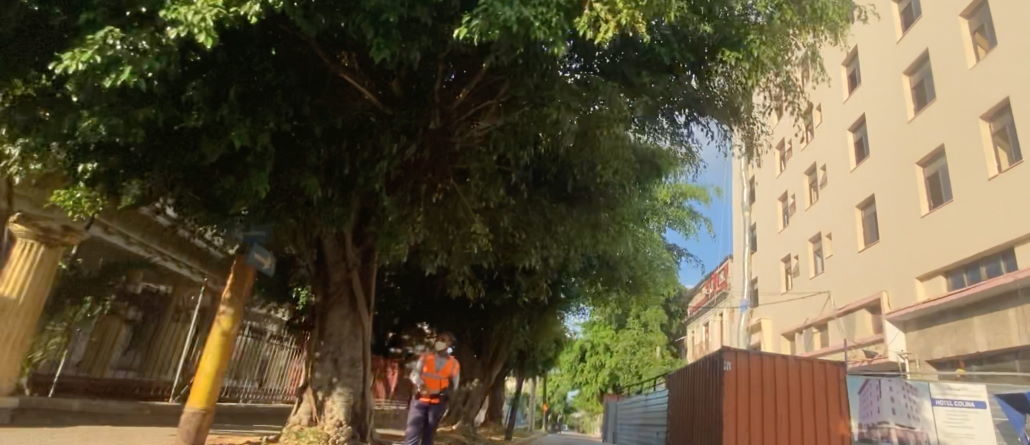




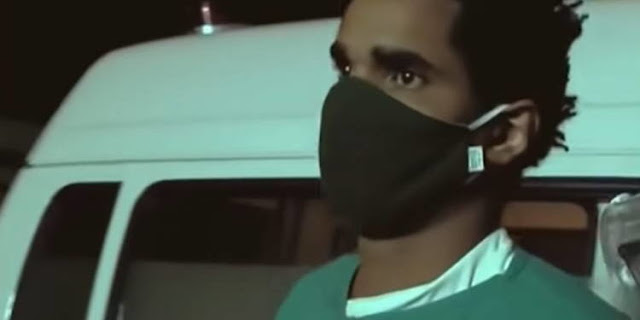


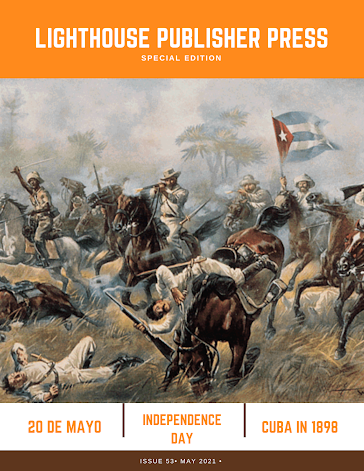

Comments
Post a Comment